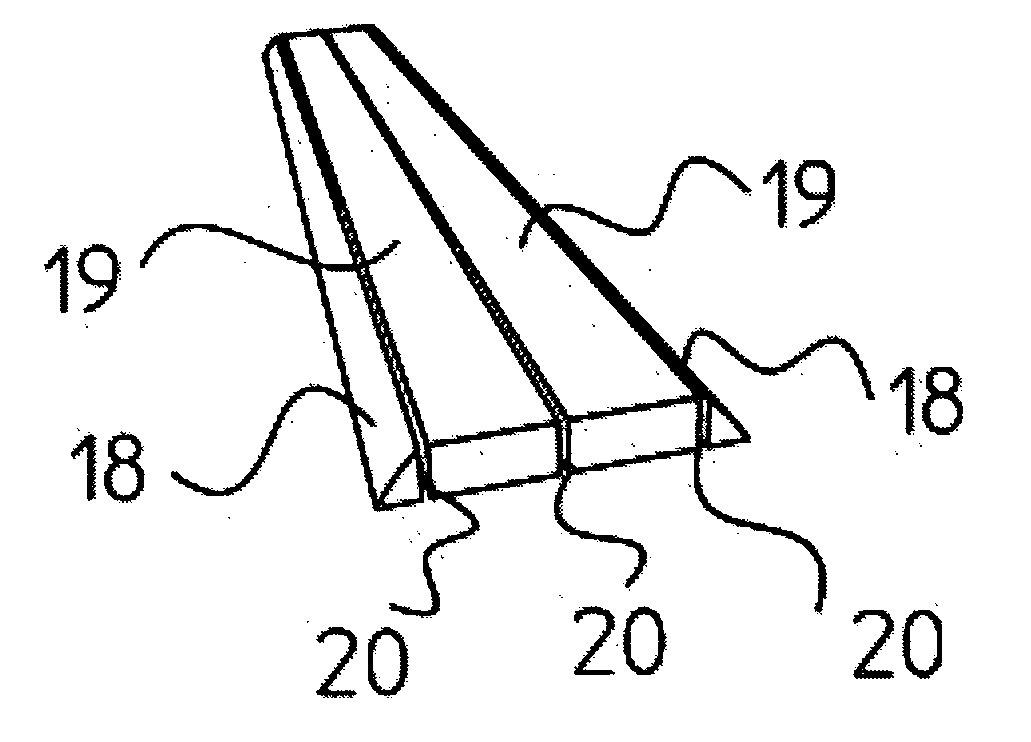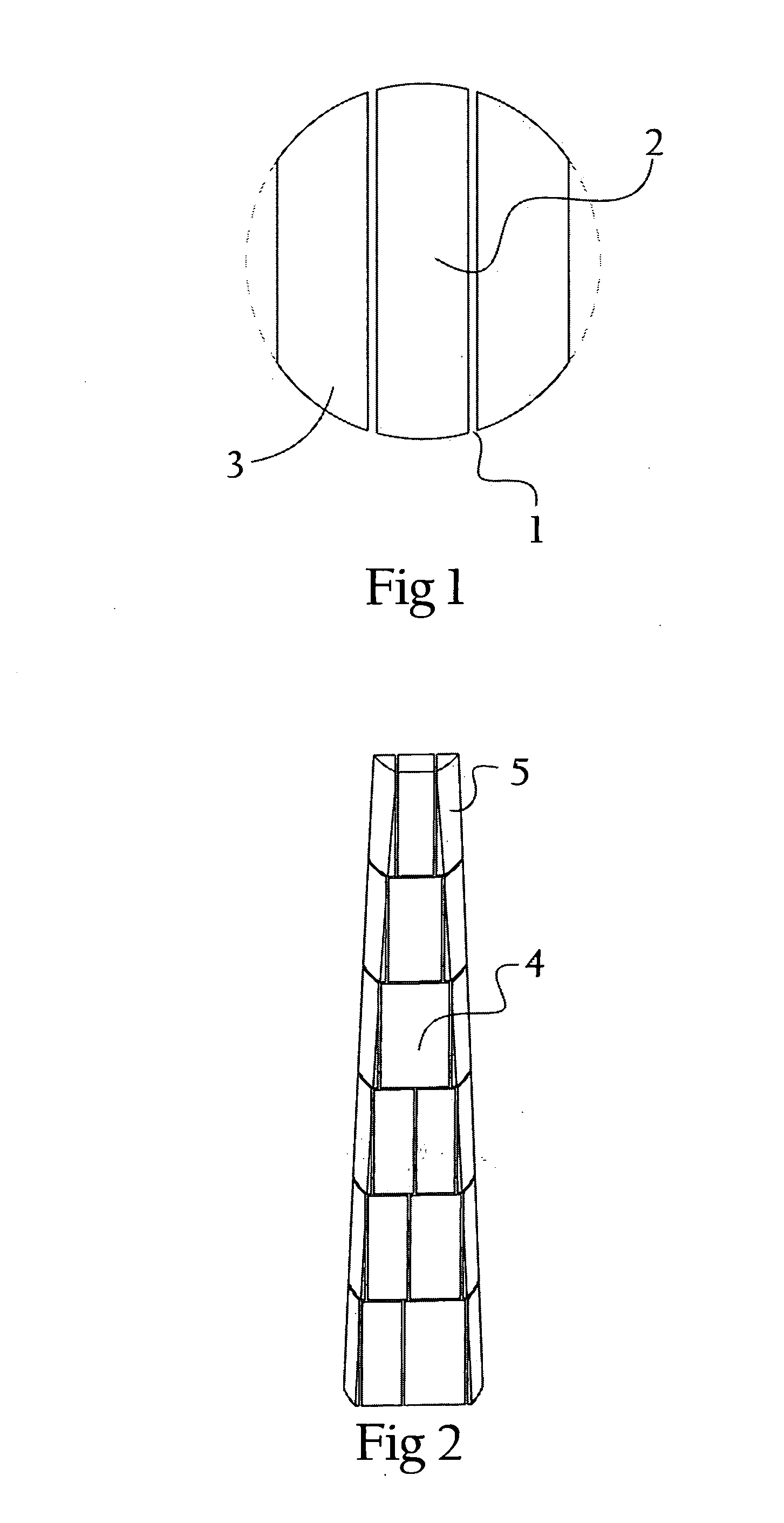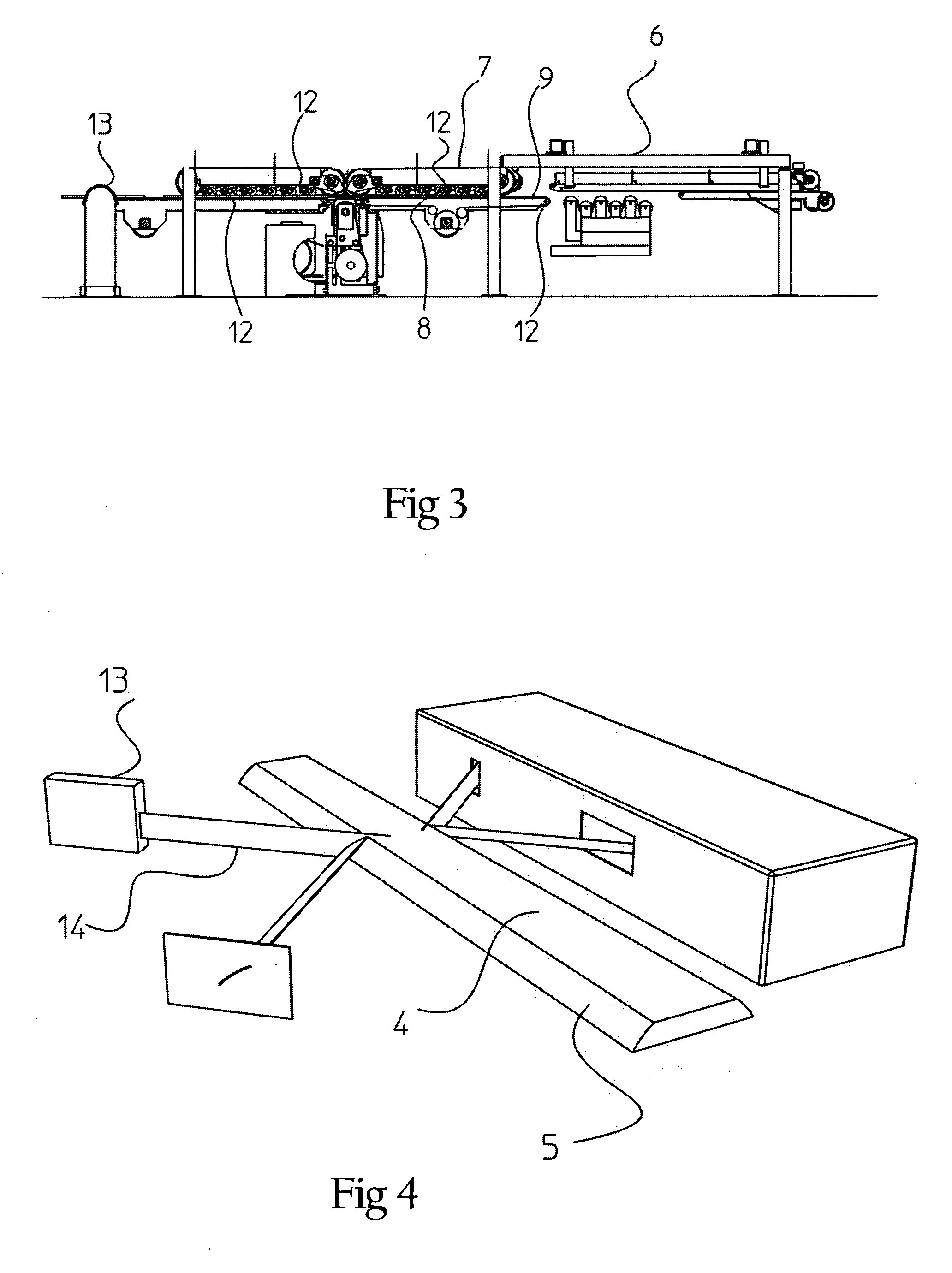Method of manufacturing edge glued laminated panels and edge glued laminated panels manufactured according to said method
- Summary
- Abstract
- Description
- Claims
- Application Information
AI Technical Summary
Benefits of technology
Problems solved by technology
Method used
Image
Examples
Embodiment Construction
[0028]In a preferred embodiment for the production of glue laminated panels the method proceeds from relatively thin timber of preferably bare wood having a top diameter of 80-140 mm, which has been cut to logs 2 with a length of 3.5-5.1 m. The exact set length of the logs must be adjusted according to the length of the end product, so as to make maximum use of the raw material. In the example, set lengths of 3.5 m, 4.3 m and 5.1 m have been selected. The taper of the timber of sawn dimensions may be assumed to be approximately 11 mm / m. In cutting up the log 2, larger root members must be milled away. The logs are sawn through in parallel sections 1 without edging to wood 3 with a thickness of approximately 20 mm and a total width preferably greater than 80 mm. After sawing, the wood 3 must be spread for drying to a moisture content of approximately 8% in the conventional way.
[0029]After drying, the wood must first be planed and then cut to form lamination pieces 4 with a length of ...
PUM
| Property | Measurement | Unit |
|---|---|---|
| Length | aaaaa | aaaaa |
| Diameter | aaaaa | aaaaa |
| Diameter | aaaaa | aaaaa |
Abstract
Description
Claims
Application Information
 Login to View More
Login to View More - R&D
- Intellectual Property
- Life Sciences
- Materials
- Tech Scout
- Unparalleled Data Quality
- Higher Quality Content
- 60% Fewer Hallucinations
Browse by: Latest US Patents, China's latest patents, Technical Efficacy Thesaurus, Application Domain, Technology Topic, Popular Technical Reports.
© 2025 PatSnap. All rights reserved.Legal|Privacy policy|Modern Slavery Act Transparency Statement|Sitemap|About US| Contact US: help@patsnap.com



